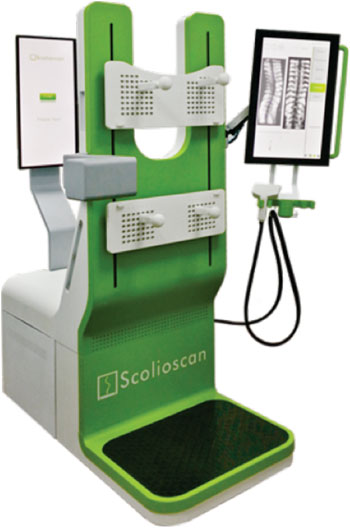Radiation-Free System Helps Diagnose Scoliosis
By HospiMedica International staff writers
Posted on 10 Jun 2015
Novel ultrasound technology captures the spine's three-dimensional (3D) profile using bony landmarks, enabling safer and more frequent screenings for scoliosis.Posted on 10 Jun 2015
Developed by researchers at Hong Kong Polytechnic University University (PolyU; Hong Kong), the Scolioscan device uses ultrasound to assess a patient's spine in the standing posture and generate coronal images of spinal curvature, which can then be measured to determine the severity of the scoliosis (as determined by spinal rotation and deformity along different planes). The device is radiation-free and enables safer screening whenever needed, thus avoiding the health risks posed by radiation exposure, particularly in young patients.

Image: The Scolioscan ultrasound scoliosis assessment system (Photo courtesy Hong Kong Polytechnic University).
The examination process takes about one minute to generate an ultrasound B-scan 3D image. This allows healthcare workers to detect adolescent idiopathic scoliosis (AIS) at an early stage, or avoid unnecessary treatments for patients with stable spinal angles. It also allows close follow-up and monitoring on the progress of spinal bracing or other treatments for AIS. The product has been commercialized by Telefield Medical Imaging (Hong Kong).
“The current verification standard is based on the Cobb's angle method, used to measure spinal deformity, but it does not always represent the true value of spinal curvature,” said Prof. Yongping Zheng, PhD, MEng. “The values of spinal curvature produced by Cobb's angle can vary by up to seven degrees. Therefore, further research is needed to find a better way to verify the angles measured by the Scolioscan or ultimately establish its own standard.”
Scoliosis is a medical condition in which a person's spine is curved from side to side. Although it is a complex 3D deformity, on an X-ray, viewed from the rear, the spine of an individual with scoliosis may look more like an "S" or a "C" than a straight line. Scoliosis is typically classified as congenital, idiopathic, or neuromuscular, when it has developed as a secondary symptom of another condition, such as spina bifida, cerebral palsy, spinal muscular atrophy, or physical trauma.
Related Links:
Hong Kong Polytechnic University University
Telefield Medical Imaging














